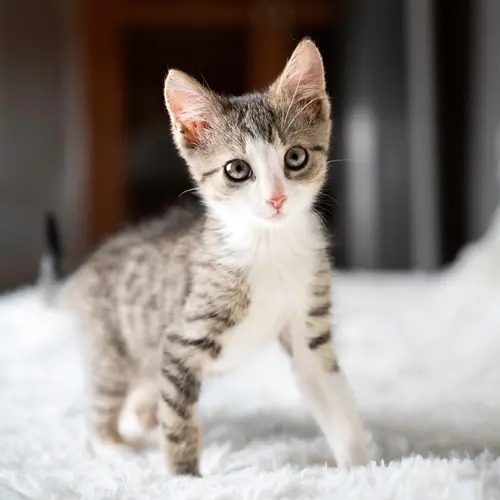Gila monsters are reptiles that live in North America and Central America. The name Gila comes from the Gila River which runs through a significant portion of their habitat. They get the "monster" part of their name from legends about their fearsome behavior. When confronted with danger, they open their mouths and hiss. They have a venomous bite that is not usually deadly to humans but can be very painful.
What Are Gila Monsters?
Gila monsters, also known by their scientific name Heloderma suspectum, are carnivorous lizards. They are one of only two venomous lizards in the world. The other species of venomous lizard is the beaded lizard. Gila monsters can grow up to 22.5 inches long and typically weigh between three and five pounds. Gila monsters can live up to 20 years in the wild and up to 30 years in captivity.
What Do Gila Monsters Look Like?
Gila monsters have dense, thick bodies. They can be identified by their round, pebble-like scales, also called osteoderms. They are typically black with orange or pink markings and have osteoderms all over their body except their stomach.
Gila monsters have forked tongues. Like many lizards, they flick their tongue to help pick up scents and find food. Their sense of smell is so powerful that they can find eggs buried six inches deep in the ground.
They also have thick tails that can store fat, which helps the gila monster survive periods of famine, hibernation, and pregnancy.
Where Do Gila Monsters Live?
Gila monsters live in deserts and grasslands. In the US, they are found in southern and western Arizona, southeastern California, southwestern Utah, and southwestern New Mexico. They also live throughout the Mexican state of Sonora, which borders the US state of Arizona. They typically live in burrows and can hibernate for long periods of time, conserving energy.
What Do Gila Monsters Eat?
Gila monsters are carnivorous, meaning they eat meat. In their natural habitat, they eat bird eggs, small mammals, other lizards, frogs, insects, scavenged dead animals, and birds. Gila monsters are excellent hunters, with a bit that's both strong and venomous. Many prey are killed from the force of the bite alone, but those that are not often slowly succumb to the venom.
Do Gila Monsters Have Predators?
These lizards don't have many natural predators. Humans and domestic animals are their primary threat. Some experts believe their painful, venomous bites developed as a deterrent for predators, rather than as a hunting tool.
Gila Monsters as Pets
Gila monsters are actually illegal to handle without special permission in several US states, including Nevada. They are not easy pets to care for because their bite can cause serious harm to a handler.
If you do come across a Gila monster in the wild, leave it alone and remain a safe distance away. If you find a Gila monster that is posing a threat in a populated area, call your local animal control agency or the Department of Wildlife. Usually, a Gila monster whose wandered into town will move on quickly. If the Gila monster does not leave, though, experts recommend putting a trash can over it, moving the trash can to a shady area, and waiting for the proper authorities to arrive, who will relocate the Gila monster.
Gila Monster Care
As mentioned, Gila monsters do not make good pets as they require unique care and are not even legal to handle in many states. In zoos, qualified experts are able to give captive Gila monsters the habitat and diet necessary to keep them happy and healthy. For example, the San Diego Zoo in California mentions feeding their Gila monsters hard-boiled eggs and mice.
Gila Monsters and Local Beliefs
Local Native Americans have spiritual beliefs and stories related to the Gila monster. For example, the Tohono O'Odham and Pima people have legends that say the Gila monster has the spiritual power to cause illness. Meanwhile, an Apache legend says that the breath of the Gila monster can kill you. The Seri and Yaqui people, though, have folklore that the skin or hide of a Gila monster has healing properties.
Gila Monster Myths
In addition to spiritual beliefs about the Gila monster, several myths have developed around these creatures that are simply not true:
They spit venom. Some say that they have seen Gila monsters spitting or shooting their venom far into the air to reach a target. However, this is not something that Gila monsters do. Their venom is administered through a bite.
Their tongue can sting. Some people believe that the forked tongue of a Gila monster can deliver a sting. However, like many lizards, the tongue is a sensory device for smelling and tasting and does not sting or deliver venom.
They have venomous breath. Some have thought that just the breath of a Gila monster can deliver their venom. However, Gila monsters only deliver venom through bites.
Gila Monsters and Humans
The Gila monster holds the honor of being the first animal in the United States to be given legal protection in 1952. However, their habitat and numbers are still under threat from human activities. Much of their habitat has been cleared away for human developments like housing, highways, and agricultural projects. Even though they are not legal to keep as pets in many places, some people still collect them from the wild for trade and sale. Additionally, as humans encroach on their habitat, domesticated animals such as dogs and cats eat or attack Gila monsters more often.
However, Gila monsters are also important to humans. A unique component of their venom called Exendin-4 is being used in a new drug called Byetta that will help people with type 2 diabetes.
